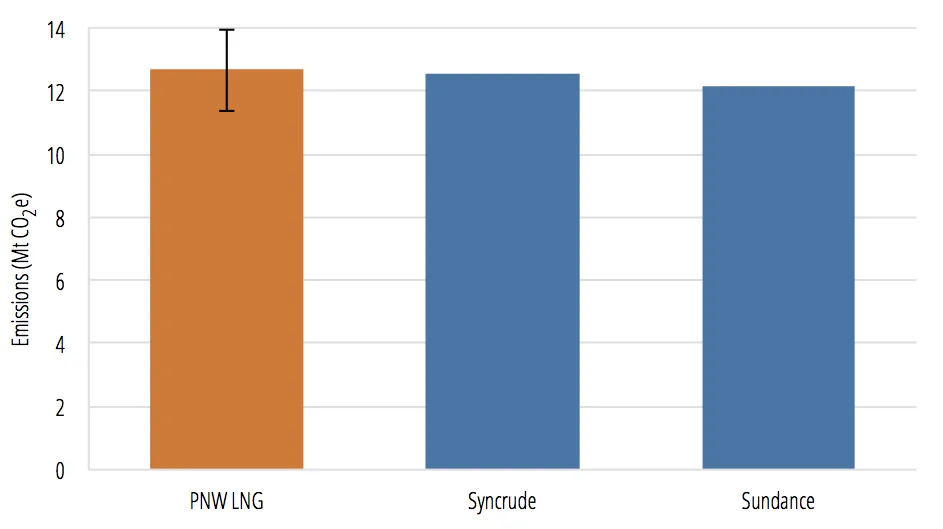VANCOUVER — As proposed, the Pacific NorthWest LNG project and its associated upstream operations could become the largest source of carbon pollution in Canada.
In a letter submitted to the Canadian Environmental Assessment Agency, Matt Horne, B.C. associate director at the Pembina Institute, says the Petronas-backed project, near Prince Rupert, would seriously undermine Canada’s commitment — formalized in the Paris Agreement and Vancouver Declaration — to reduce carbon pollution.
If built, the liquefied natural gas project will also make it impossible for B.C. to achieve its legislated emissions target for 2050. Methane emissions, which are likely underestimated in the draft environmental assessment of the project, would make the situation worse. Contrary to claims by the B.C. government and project proponents, the increased availability of LNG and natural gas is not a climate solution because the policies in B.C. and importing jurisdictions to prioritize renewable energy, energy efficiency and methane reductions are inadequate.
The letter also highlights gaps in climate policy in B.C. The province should address those weaknesses by adopting the Climate Leadership Team’s package of recommendations as part of its forthcoming Climate Leadership Plan.
SkeenaWild Conservation Trust included the Pembina Institute’s letter in its formal submission to the CEAA on the Pacific NorthWest LNG project.
Quick facts
- The annual carbon pollution from the Pacific NorthWest LNG project and its associated upstream operations is estimated at 11.5 to 14.0 megatonnes of carbon dioxide equivalent. Canada’s top two carbon polluters are Syncrude’s oil sands mine and upgrader and the Sundance coal fired power plant — at 12.5 and 12.2 megatonnes, respectively.
- The project could account for 75% to 87% of the emissions allowed under B.C.’s 2050 target.
- Methane emissions from Pacific NorthWest LNG’s associated upstream operations are likely underestimated based on the latest findings of the Intergovernmental Panel on Climate Change and the U.S. Environmental Protection Agency.
Quotes
“Canada promised in the Paris Agreement and Vancouver Declaration to reduce carbon pollution to address the climate crisis. Pacific NorthWest LNG could be the largest carbon polluter in Canada, and it represents a serious obstacle to following through on that promise.”
— Matt Horne, B.C. Associate Director, Pembina Institute
“No matter how you spin it, the Pacific NorthWest LNG project will not help reduce global carbon pollution. Stronger climate policies — not increased fossil fuel production — are the climate solution.”
— Matt Horne, B.C. Associate Director, Pembina Institute
[30]
Download the letter: Pacific NorthWest LNG: A serious test of Canada’s climate commitment
Join the conversation on Twitter: #PNWLNG @Pembina
Contact
Stephen Hui
Communications Lead, Pembina Institute
778-987-7654
stephenh@pembina.org
Background
Letter: Woodfibre LNG emissions analysis highlights methane policy gap in B.C.
Webinar: Managing methane emissions from B.C.’s gas sector
Blog: 4 key questions for the Canadian government’s new climate test
Paper: B.C. Climate Leadership Plan submission: Phase 2 consultation




